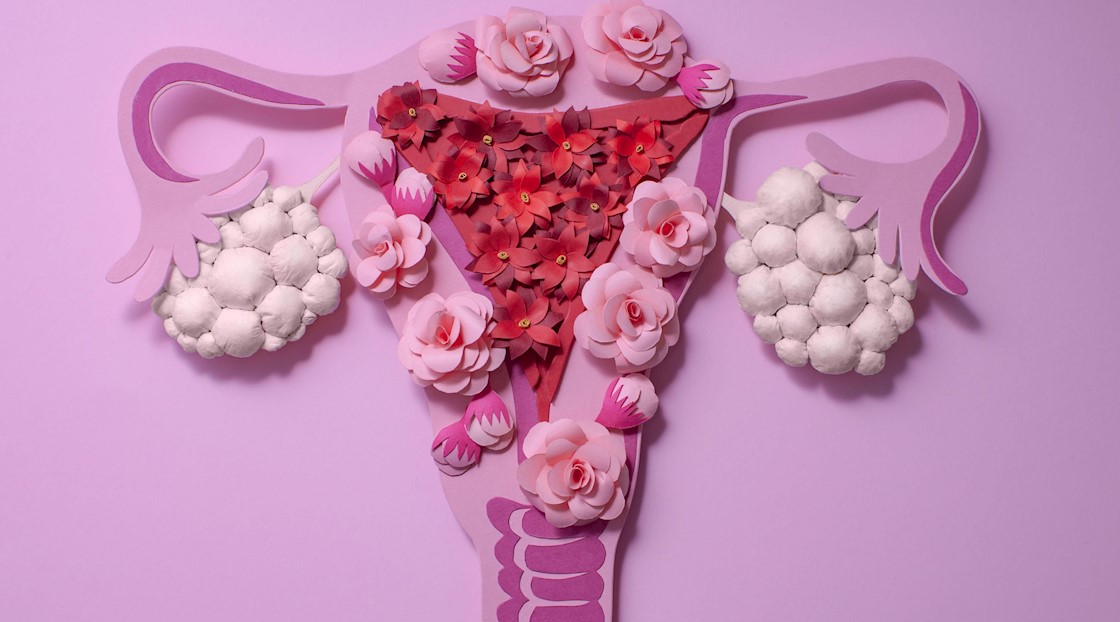This is what salons and aesthetic clinics need to know about Polycystic ovary syndrome (PCOS), including how it affects the skin and how to treat clients.
PCOS is a condition affecting an estimated one-in-ten people who menstruate, according to the NHS.
“PCOS is a condition that I come across regularly in my clinic,” shares Katie Thompson-Ashton, founder of The Beauty Editor.
“It’s a common, complex condition that affects the way the ovaries work. Symptoms are not only physical, but they often leave clients with low self-esteem and cause significant long-term mental anguish.”
What are the symptoms of PCOS?
PCOS has three main features:
-
Irregular periods
Irregular periods are caused by the ovaries not regularly ovulating, or releasing eggs, resulting in periods being sporadic.
-
Excess hair
High levels of “male” hormones in the body can not only leave hormones imbalanced but may also lead to physical signs of the imbalance such as excess hair growth on the face and body.
-
Polycystic ovaries
Ovaries that are polycystic become enlarged and contain many harmless follicles that can be up to 8mm (approximately 0.3in) in length. These fluid-filled sacs surround the eggs which makes the ovaries unable to release the them causing irregular ovulation.
How does PCOS impact the skin?
Aside from the three main features, PCOS can present itself in other ways – specifically on the skin.
“Some of the most common dermatologic manifestations of PCOS can include hirsutism (excess hair growth), acne vulgaris, alopecia, and acanthosis nigricans (dry, dark patches of skin), " shares facial aesthetics doctor and founder of MZ Skin, Dr Maryam Zamani.
Whilst acne is one of the symptoms most sufferers struggle with, it’s important to remember that PCOS affects every person differently.
“Acne can be a sign of PCOS, but not everyone with PCOS will suffer with it. About 70% of the patients with PCOS will suffer from some form of acne,” explains Dr Amélie Seghers, consultant dermatologist at The Clinic by Dr Maryam Zamani.
Unfortunately, PCOS-related acne can be more resistant to treatments, especially if there is evidence of an underlying hormonal imbalance, explains Seghers.
“Classically testosterone is elevated (but can be normal in PCOS), however other hormones such as LH, FSH, estrone and progesterone can also show abnormal values. The excess of male hormones, also known as hyperandrogenism, is what often drives the acne and hair problems in PCOS patients."
“The most common effects I’ve seen in my clinic are abnormal hair growth, oily skin and acne, and clients have also spoken to me about the darkening of skin around the neck crease, groin and under the crease of their breasts,” shares Thompson-Ashton.
“Skin tags are often found in the armpits or the neck as well,” she continues. "We regularly remove these in our clinic.”
How to treat PCOS in a salon
There are a number of ways beauty therapists can help to remedy the symptoms of PCOS – from facials to laser treatments.
1. LED therapy for PCOS
“LED light therapy can be very effective at calming in individuals with PCOS. Blue and near-infrared light is perfect for this. Blue light also acts as an antibacterial to help prevent any acne from reoccurring,” explains Sienna X regional trainer Gemma Smalley.
“The near-infrared helps to heal wounds, calms redness and promotes generally healthy skin. Light therapy can be added onto a calming facial or offered as a standalone treatment.”
2. Laser and IPL hair removal for PCOS
“In our clinic, we successfully treat hirsutism using medical grade laser and IPL hair removal,” shares Thompson-Ashton. “Both laser and IPL light work in the same way for the purposes of hair removal. If the right amount of light energy is used the hair follicle is heated up to a critical temperature that results in an interruption of the hair growth cycle, destroying the hair follicle so the hair can’t regrow.”
“Results can be truly life changing for PCOS sufferers,” she adds. “However, it’s important to keep in mind that due to PCOS causing fluctuations in hormone levels, clients may need to have more treatments in order to keep the hirsutism at bay.”
In addition to being an important treatment for PCOS suffers, laser and IPL can help to transform the lives of your transgender clients, or people transitioning. Here’s how to support trans clients undergoing laser treatments.
3. Electrolysis and waxing for PCOS
While laser and IPL can have a huge impact on hair growth, the treatments can be expensive. Luckily, there are alternatives.
“Waxing is a more cost-effective treatment you can provide in-salon. With regular treatments, waxing can offer hair-free, smooth skin for up to 6 weeks. This treatment gives instant results and is a quick fix for somebody suffering from excessive hair growth,” suggests Smalley.
Read more about PCOS and facial waxing – what you need to know.
“Electrolysis is another very effective treatment for PCOS sufferers,” adds Thompson-Ashton, “A tiny probe is inserted into each hair follicle, which sends out a pulse of electric current. The current permanently damages and then destroys the follicle.”
4. Salicylic acid and PCOS
Treatments using salicylic acid can help to improve the skin for those suffering from acne.
“Use salicylic acid in a facial treatment to reduce redness and swelling allowing spots to shrink.” explains Smalley, “This is also an opportunity to retail some beneficial products to further improve the skin condition for those with PCOS.”




